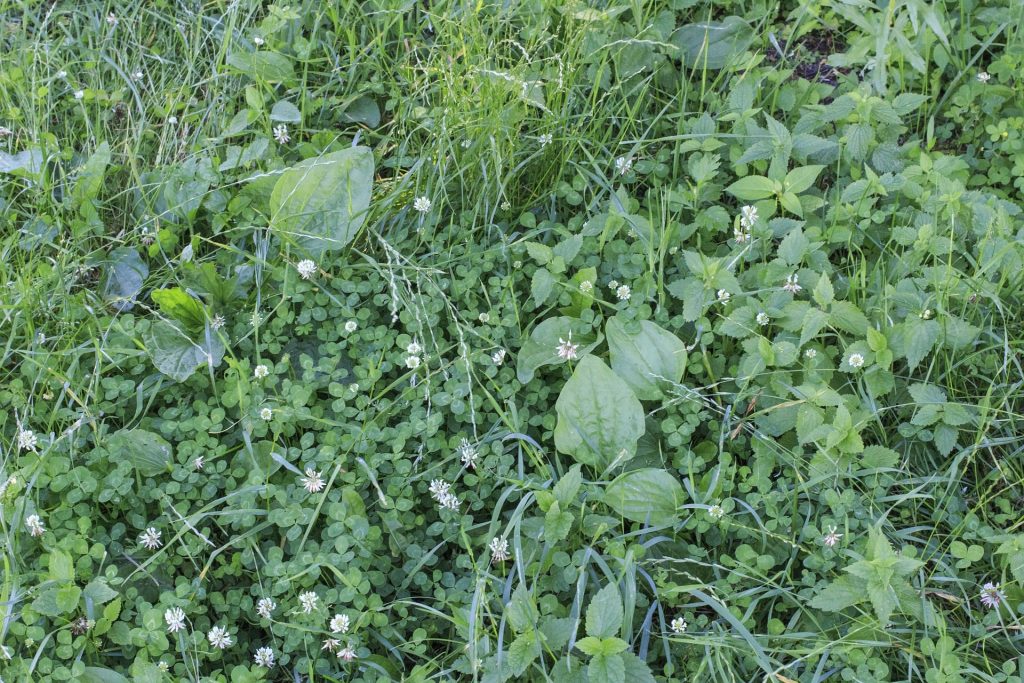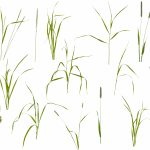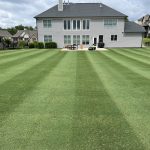Are you struggling with clover taking over your lawn?
It’s quite normal to have a little clover in your garden if you live in the UK. However, if it’s out of control, clover can be a bit of a nuisance.
In this guide, we’ve explained three natural methods to get rid of clover. We’ve also explained how to prevent the clover from returning, once you’ve killed it off.
How to spot clover
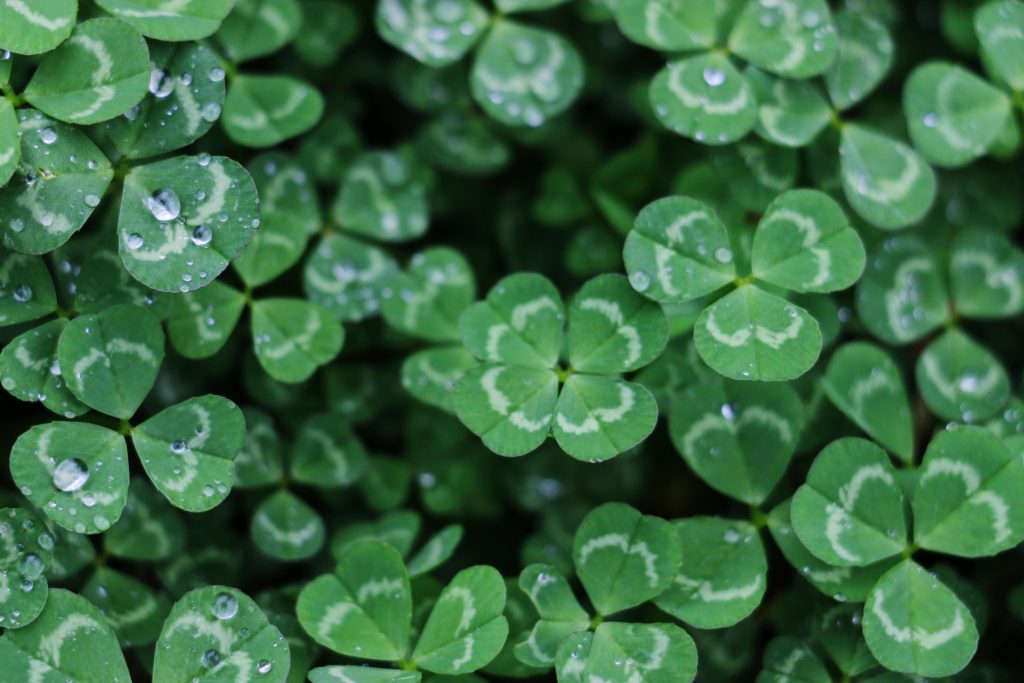
Before you begin eliminating clover, you need to ensure that you know where to treat your grass, by identifying any clover.
Clover is identifiable by its trifoliate leaves. Meaning, each clover has three circular-shaped leaves, at the top of a short, thin stem. There is a white line that bisects each leaf horizontally, following the shape of the top of the leaf, and the leaf has a fold that bisects it vertically.
However, there are a few different types of clover, and they don’t all look the exact same.
While clover typically has dark green leaves, they can be white as well, and may also have pink or yellow flowers.
Also, the size of each cloverleaf can vary quite substantially. However, most clover will not grow larger than the diameter of a penny.
To spot areas of clover, you can also leave your lawn for a week or two without mowing it. Typically, clover will not grow as tall as most types of grass, so you will be able to spot the clover in patches of your lawn that have remained short.
Method 1: removing the clover by hand
In some cases, you can actually dig the clover out of the ground, to remove it from your lawn without the need for weedkillers or other chemicals.
You may remove some areas of grass in the process, but it’s easy enough to overseed these bare patches, as we have discussed a bit below.
To remove clover, dig around it using a small gardening fork or hand trowel. Clover roots do not go very deep, so the main difficulty in this process is cutting through the initial layer of foliage, especially if clover is growing on top of existing grass.
Pull the clover out of the ground carefully, including its roots, and place it in a bucket or wheelbarrow, to prevent clover seeds from spreading onto other areas of your lawn.
If you see any roots, leaves, or seeds left over, try to carefully remove them from the soil. If doing this would be too difficult, it might be a good idea to smother the affected area for a week or two, to ensure that any remnants of the clover have time to decompose. We have explained how to do this below.
Method 2: smothering the clover
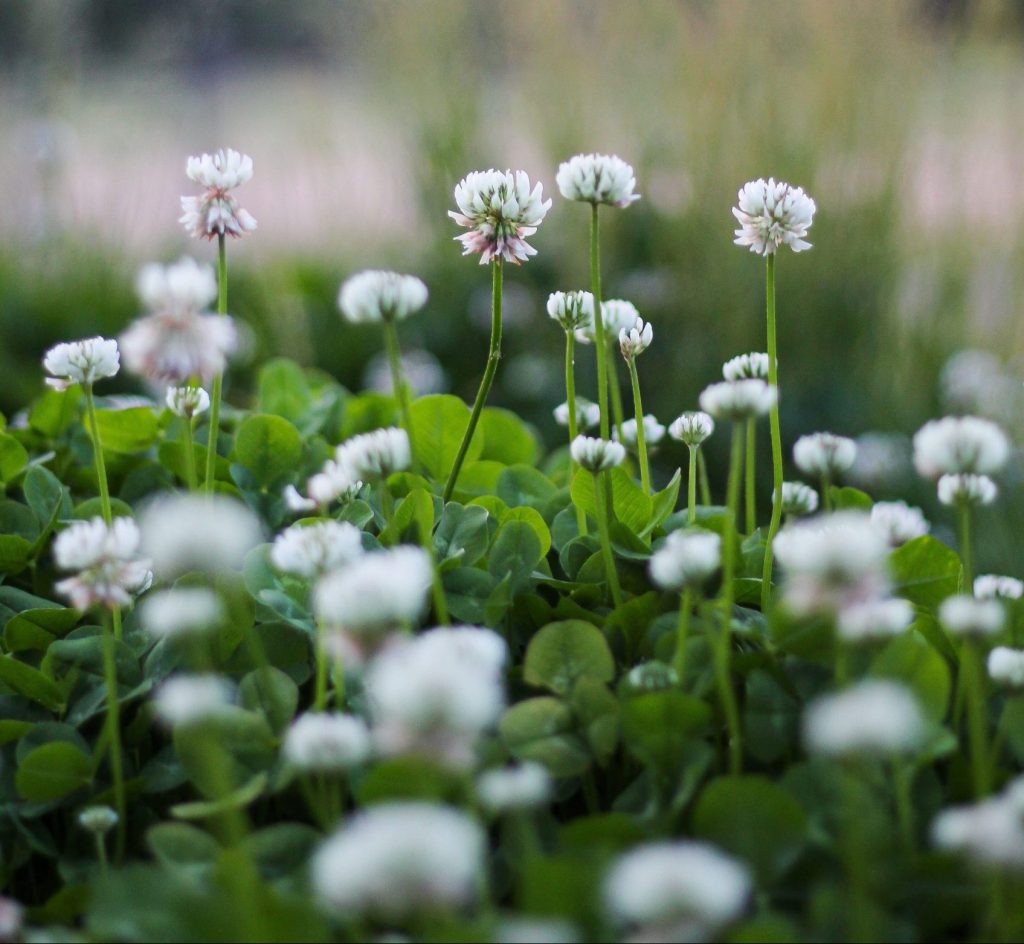
This is another good choice if you’re looking to get rid of clover naturally.
You will need:
- A small piece of tarpaulin, a garbage bag, or an old carpet. It’s important not to use something that sunlight can pass through, so an old sheet or sack is not the best option.
- Some large stones, bricks, or tent pegs.
Smother the clover with your chosen material, and weigh or peg it down around the edges. Ensure that you are blocking all sunlight from the areas of clover, and blocking as much moisture and air as possible.
Leave the tarpaulin in place for 2-3 weeks, or until the clover is completely dead. If there is any debris, remove it from the soil, or wait a bit longer for it to fully decompose.
Don’t worry if you end up killing some areas of grass as well when using this method. Since you will be reseeding the bare patches where the clover used to be, this isn’t a huge problem.
Method 3: use a vinegar solution to kill the clover
You can also kill clover using a vinegar solution.
To do this, mix one part vinegar with one part water, and a dash of dishwashing liquid.
Add the solution to a spray bottle, and apply it liberally to any areas of clover. Apply it once every couple of days for about two weeks, or until the clover is very brown and is nearly completely dead.
Then, dig around the dead clover and remove it from the ground, or wait a few weeks for it to decompose completely.
Remember, your vinegar solution will also kill your grass, so be careful to apply it in the right place.
What should I do if my lawn is full of clover?
If your lawn is completely full of clover, you have two options to fix the problem.
1. Treat your lawn to help it fight off the clover
When we use the word “treat”, we mean to spoil your lawn, as well as treat it in the literal sense.
- Apply organic fertiliser, to help feed your lawn, and help it grow stronger. Using organic fertiliser is also important in helping to increase nitrogen levels, which prevents clover growth. Other types of fertilisers don’t always provide the same level of nitrogen as the organic stuff.
- Aerate your lawn, to help moisture and air reach the roots.
- Consider scarifying your grass, if you haven’t done so in a long time, especially if there is a thatch buildup.
- Keep the lawn a bit taller than you would regularly. Clover grows best when the grass is very short.
- When you do mow your lawn, mow it more regularly at a higher cutting height, rather than letting it grow tall, and chopping it down a lot. This helps to encourage healthier growth. Also, ensure to collect your clippings, to prevent spreading clover seeds.
2. Smother the entire lawn, and start over again
If you have a smaller lawn, and it’s completely overrun with clover, moss, and weeds, you may be tempted to start over again.
To do this, it’s best to avoid using herbicides to kill everything on your lawn, as this can ruin the fertility of the soil. Instead, smother your grass using a large tarpaulin, and then reseed it, or lay new sod.
You will need to wait about three weeks for everything on your lawn to die, and decompose enough to plant new grass.
How to prevent clover from returning

Now that you have removed the clover from your lawn, you need to have a plan to prevent it from ever coming back. Otherwise, you’ll be trying to remove the clover again in a month’s time.
Here are some steps you need to take to prevent clover from returning to your lawn:
Overseed affected areas
If you have successfully lifted the clover out of the ground, or otherwise killed it, you need to overseed the affected area, to help your lawn take control.
To do this, wait until the area that had clover is completely free of any dead organic matter, if you have smothered it or applied a chemical weed killer. Ensure to remove as much debris as possible, including any leaves, sticks, or stones that are on the surface of the soil.
At this stage, you’ll need some grass seed. It’s a good idea to buy a variety that matches the type of grasses you already have on your lawn if you can, to ensure that the reseeded areas fit in with the rest of your grass.
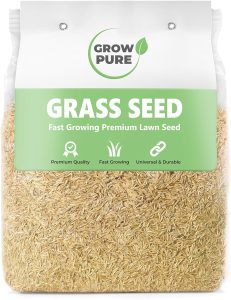
Then, you can apply the grass seeds as per the packet’s instructions. Typically, you can spread the seeds by hand, but you can also use a lawn spreader to help make the process more efficient, if you have large bare patches you need to reseed.
You don’t have to be perfectly even, but it’s a good idea to spread a bit more seed than you think is necessary, since some of them won’t grow, especially if your seed bag is a bit old.
Once the ground is covered in seeds, give it a good soaking, and continue watering the ground twice daily, unless it rains heavily. This helps to push the seeds into the soil, and gives them the moisture that they need to grow. You can also apply a bit of fertiliser to help encourage growth, but this is optional.
After about a week, you should notice that the seeds have started growing, and after six to eight weeks, your grass should be fully grown. Ensure to avoid walking on your new areas of grass while it’s just starting out.
To learn more about seeding your lawn, read our guide on the subject.
Keep your lawn a bit longer
Clover really likes sunlight, so as your lawn grows taller, it doesn’t do as well.
If you leave your lawn a bit taller, at 2.5-3 inches or more, this can help to prevent clover from growing.
Feed your lawn regularly
The best thing you can do to prevent clover from growing on your lawn is to take good care of it. This way, there will be nowhere for the clover to grow.
Apart from regular mowing, aeration, and scarification, it’s especially important to feed your lawn on a regular basis.
Assuming there is no clover or other weeds on your lawn, you can mulch your grass clippings back into the soil, to provide your lawn with valuable nutrients.
You can also apply fertiliser in the spring and autumn, to help keep your lawn healthy and clover-resistant.
To learn more about taking good care of your lawn, take a look at our lawn care calendar, and discover what sorts of lawn care activities you can do as the seasons change throughout the year.
Should you mow your lawn when there is clover on the grass?
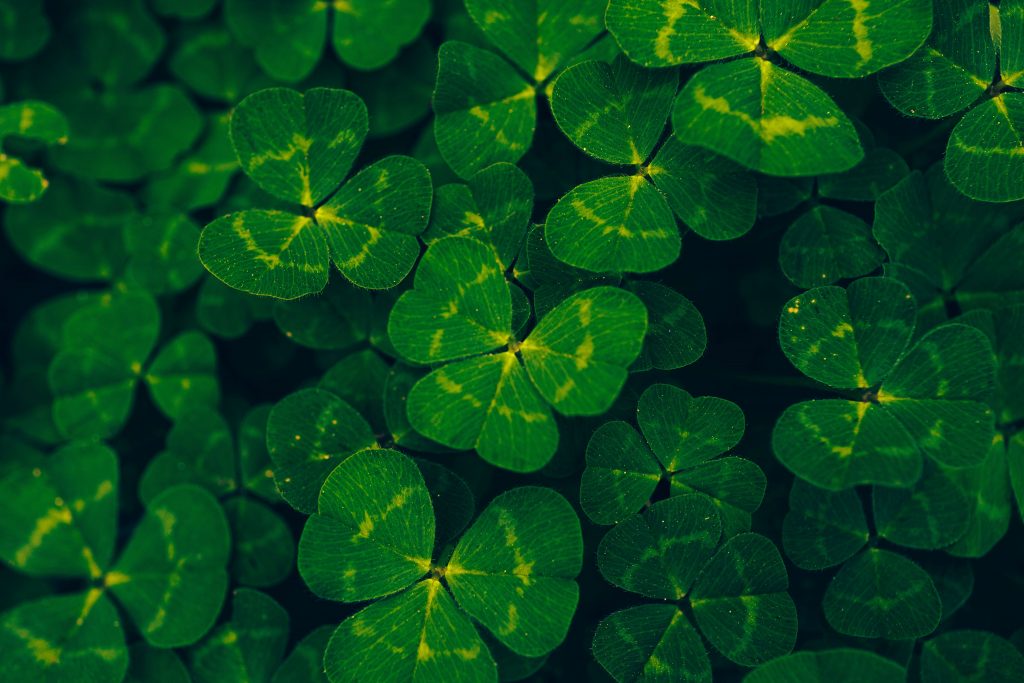
If you notice some areas of clover on your lawn, it’s a good idea to leave it a little longer in between mows, to give the lawn the chance to grow a bit taller. This can help to starve the clover of light, stopping it from growing.
However, you can still mow the lawn when there’s clover on it. Just ensure to bag your clippings, and dispose of them in the garden rubbish. This reduces the likelihood of spreading clover all over your lawn.
Conclusion
This is the end of our guide to getting rid of clover from your lawn.
Hopefully, you found a good method to kill the clover on your lawn, and improve the state of your grass.
If you have any questions about these methods, or you’re unsure how best to remove clover from your lawn, feel free to leave a comment below, and we’ll get back to you as soon as possible.

I’m Josh, and I’m the head writer at Lawn Care Pro.
I love everything lawns, but I’m a bit of a lawn mower nerd. I spend a lot of my free time tinkering with mowers, and planning my mowing schedule for the next few weeks.
I’m also into cars, which comes in very helpful when servicing a mower engine!


